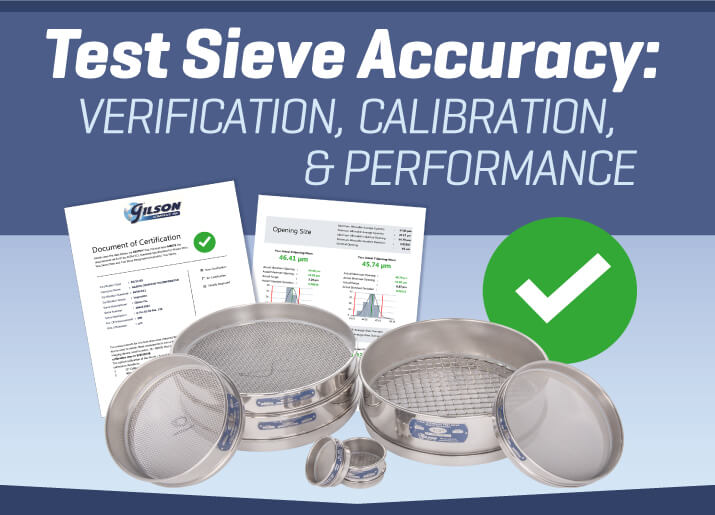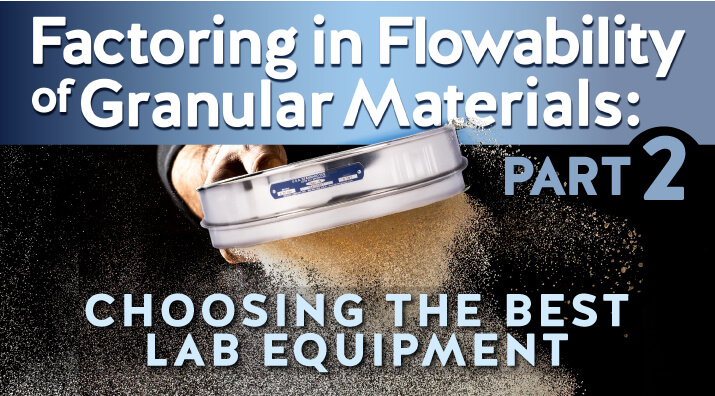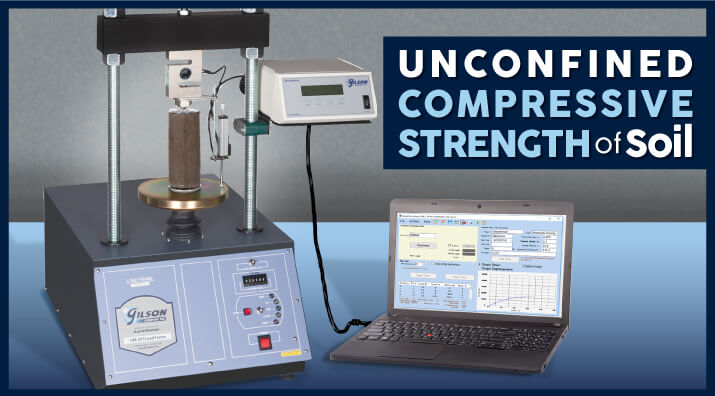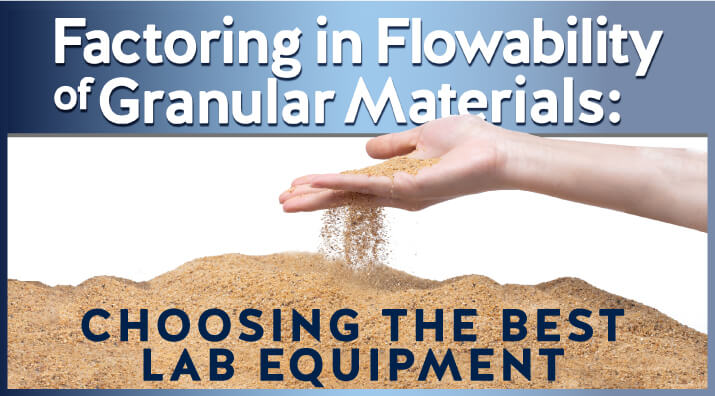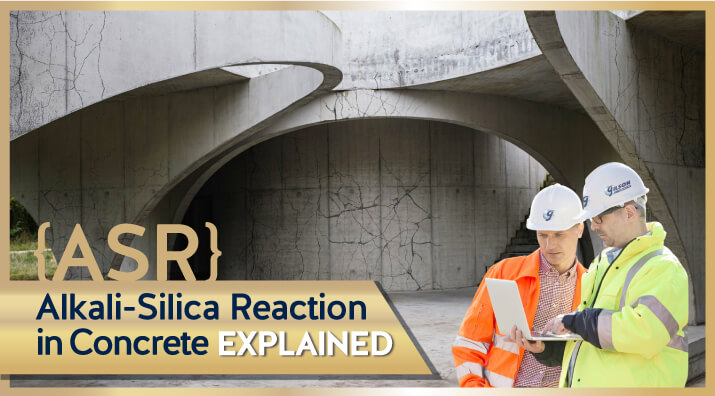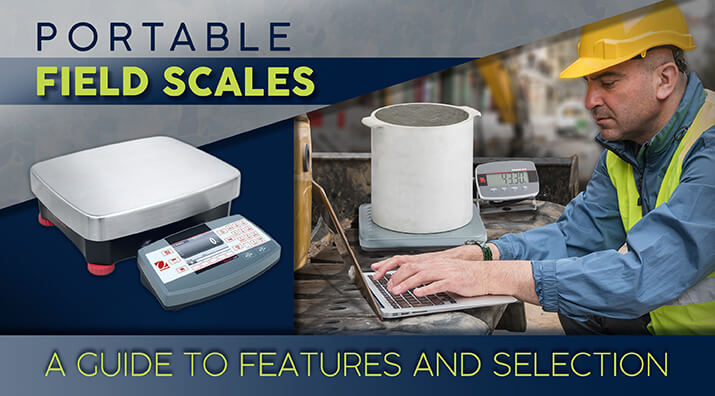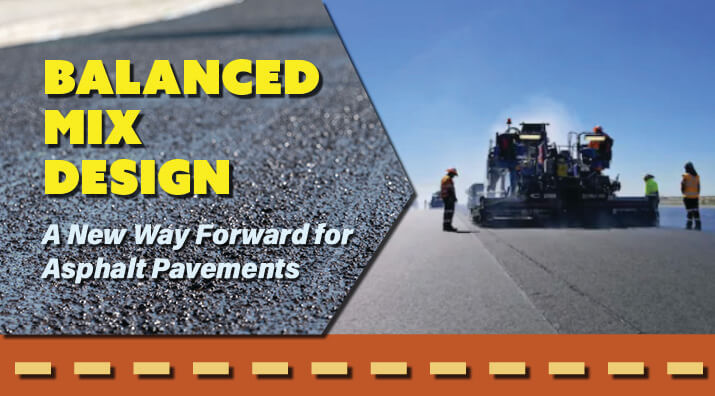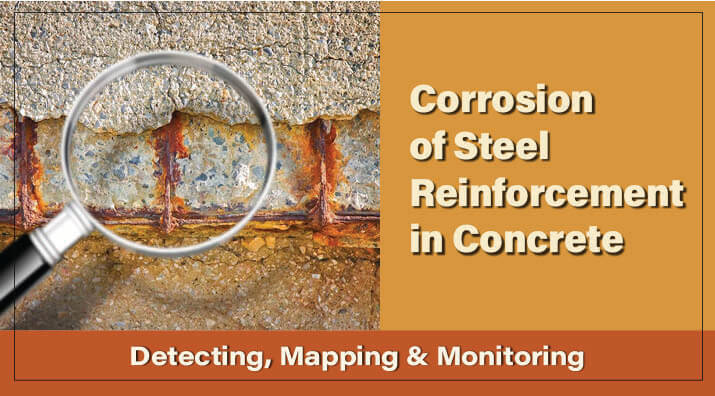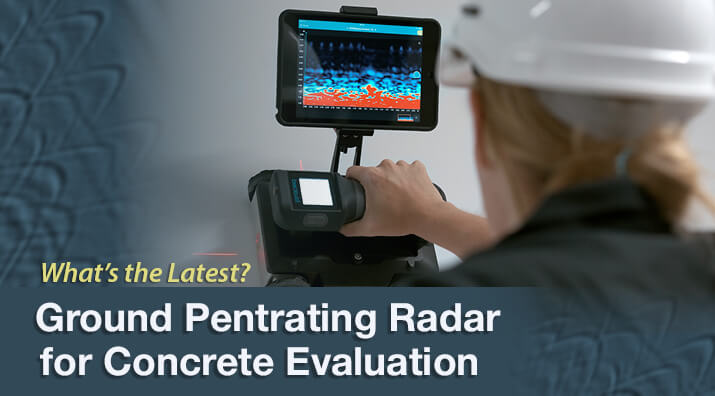Verification, calibration, and performance tests all contribute to the accuracy of test sieves. Understanding sieve accuracy will ensure you get the information you need out of your test sieves or screen trays.
- Log in
- Favorites List
-
Shopping Cart
You have no items in your shopping cart.
- Gilson Chat
Blog posts tagged with 'Resource Guide'
Have questions about your materials testing equipment? We have the answers to these questions and much more right here! Check back monthly for long-form blog posts, how-to guides and infographics. We’ll address industry insights, the operation and maintenance of specific equipment, and our product line recommendations, all designed to better serve you.
Bookmark this page, add it to your RSS reader, or subscribe to our newsletter, so you never miss a hot topic.
Test methods for dry granular materials must be built around the flowability of the material. No sampling, sizing, or handling method can be performed accurately or efficiently if it does not work in harmony with the material's flow properties.
Unconfined compressive strength is a standard geotechnical test performed on cohesive soil samples in construction materials testing laboratories. Straightforward sample preparation and a rapid, uncomplicated procedure makes unconfined compression tests cost-effective when fundamental strength values are adequate for design.
Every stage of sampling, dividing, and testing granular material is affected by its flow properties. Understanding a particular material and the unique factors that impact its flowability increases the efficiency and accuracy of your laboratory testing and can even help control your budget. In this article, we discuss what equipment is best suited for your testing application.
Although Alkali-Silica Reactivity (ASR) has created problems in concrete mixtures for centuries, the mechanism was not understood and documented until the mid-1930s. ASR is now recognized as a significant cause of concrete deterioration anywhere in the world where siliceous aggregates are found. In this blog article, we discuss what ASR is, the effect it has on concrete, prevention, and the equipment to use for testing.
Some test methods must be performed on the spot to ensure that the best products are being produced or placed following specified procedures. Portable weighing devices are especially important to operate accurately and conveniently in remote locations. In this blog post, we’ll discuss what to look for when choosing one.
Balanced Mix Design is a practical and common-sense approach to constructing long-lasting asphalt pavements. The design of asphalt mixes traditionally follows a prescriptive, volumetric path. Materials are selected and combined to meet the requirements of the specification with little evidence of what their real performance will be in a localized application or a certain environment. Researchers and practitioners alike have concluded that just mixing the specified ingredients in the stated volumes is a poor predictor of long-term asphalt pavement performance. As one prominent paving engineer put it, “Let’s stop using the recipe to determine if the cake is good.”
The corrosion of reinforcing steel is a significant and preventable problem that shortens the useful lifespan of concrete structures. The mechanisms for its development and how it eventually damages the concrete structures it was designed to protect have been well-known for over 100 years. Similar to progressive disease, early detection and monitoring are the most effective strategies to minimize problems. Fortunately, innovative nondestructive instruments are making it easier and more efficient to find, follow, and repair corrosion before extensive damage occurs.
Test sieves are simple devices, but they are still scientific instruments and the most cost-effective and widely used particle sizing and gradation testing method. This blog article will cover the accuracy verification of sieves, agitation and sieve shakers, accessories, and wet-wash sieves.
Ground Penetrating Radar (GPR) is a powerful tool for the nondestructive testing and evaluation of reinforced concrete. Next-generation refinements featured on these versatile new models from Gilson simplify the location and mapping of reinforcing steel bars, tendons, and other embedments while assessing homogeneity, measuring thickness, and detecting cracks, voids, and other discontinuities. GPR units connect wirelessly to Apple iPad® tablets for potent computing power, live 3D and Augmented Reality (AR) rendering, high-resolution display, and fast, easy upgrades. Encrypted Wi-Fi connection stores data in the cloud for instant sharing and collaboration.
- 2024
- 2023
- 2022
- 2021
- 2020
- 2019
- 2018
- 2017
- 2016
- 2015















